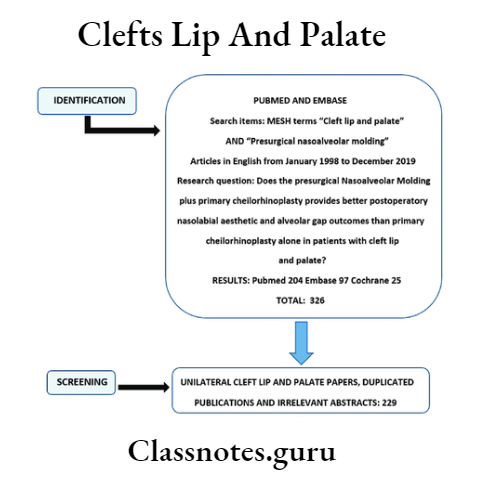Clefts Lip And Palate Important Notes
1. Classification of cleft lip and palate
- Veau’s classification:
- Group 1- Cleft of soft palate only
- Group 2 – cleft of hard and soft palate
- Group 3 – Complete unilateral cleft
- Group 4 – complete bilateral alveolar cleft
2. Management Of Protocol:
- Immediately after birth
- Pediatric consultation
- First few weeks
- Hearing testing
- At 10–12 weeks
- Surgical repair of lip
- Before 1 year or 18 months
- Surgical repair of the palate
- 3 months after palate repair
- Speech-language repair
- 3-6 years
- Soft palate lengthening
- 5–6 years
- Pharyngeal surgery
- At 7 years
- Orthodontic treatment phase 1
- 9–11 years
- Pre-alveolar bone grafting
- 12 years or later
- Full orthodontic treatment phase 2
- 15–18 years:
- Placement of implant
- 18–21 years
- Surgical advancement
- Final nose & lip revision
- Rhinoplasty
Cleft Lip And Palate Surgery

Clefts Lip And Palate Short Essays
Question 1. Management protocol of cleft patients.
Answer:
Management protocol of cleft patients
- Immediately after birth:
- Pediatric consultation
- First few weeks:
- Hearing testing
- At 10–12 weeks:
- Surgical repair of lip
- Before 1 year or 18 months:
- Surgical repair of the palate
- 3 months after palate repair:
- Speech& language repair
- 3–6 years:
- Soft palate lengthening
- 5–6 years:
- Pharyngeal surgery
- At 7 years:
- Orthodontic treatment phase 1
- 9–11 years:
- Pre-alveolar bone grafting
- 12 years or later:
- Full orthodontic treatment phase 2
- 15–18 years:
- Placement of implant
- 18–21 years:
- Surgical advancement
- Final nose & lip revision:
- Rhinoplasty
Read And Learn More: Oral and Maxillofacial Surgery Question and Answers
Cleft Lip And Palate Surgery
Question 2. Cleft palate.
Answer:
Cleft palate
- It is a congenital disorder
- It involves a breach in the continuity of the palate formed during the development of the face
- Corrected entirely surgically
Etiology of Cleft palate:
- Hereditary
- Sex
- Maternal age
- Syndrome associated
- Environmental factors
Clinical Features of Cleft Palate:
- Facial deformity
- Inability to feed
- Defective speech
- Nasal regurgitation of fluids
- Otological problems
- Dental problems
- Malformed teeth
- Malocclusion
- Congenital anomalies
Timing of Repair: 12–24 months
Clefts Lip And Palate Short Question And Answers
Question 1. Millard’s rule / Timing of repair.
Answer:
Millard’s rule / Timing of repair
It is a rule for the management of cleft patients stating the timing for operating
Rule of 10:
- 10 gm% of Hb
- 10 weeks of age
- 10 pounds of weight
Reasons for Millard’s rule:
- The lip is large & thick enough for easy repair
- Baby is sufficient to bear operation assault & accept GA
- Feeding with a dropper post-operatively is not difficult
- Facilitate sucking
- Helps in developing alveolus
- Defective speech is avoided
- Reduction of the gap in the palate
